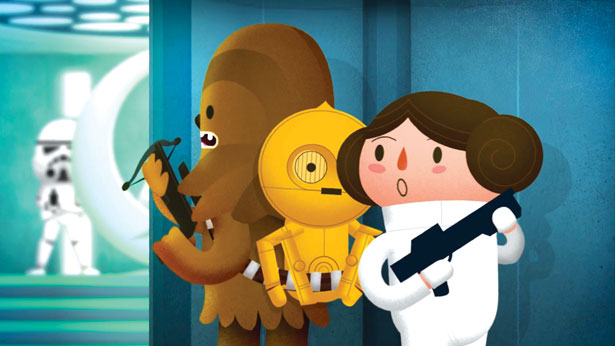Nine tips for crafting a killer showreel
You’ll often have just one shot to impress your dream studio, so how do you get your showreel onto the interview shortlist?
Games, VFX and film studios receive thousands of showreels each year: trawling through them can be a gruelling, eye-straining task. To stand out, you need to strike the viewer with enthusiasm, interest and inspiration, while also ensuring your reel is easy to access and play. So how do you craft the perfct showreel? With these pro tips...
1. Tailor your reel
All studios look for different skills, so do your research, and tailor the reel to the position you’re applying for. The reel should show some of the work the company deals with. But don’t throw stuff in just because it’s relevant, be sure that it’s great.
2 Go back to basics
In terms of titles and format, simple is often better. White text over a black background is all that is necessary. Overly fussy or badly designed intro graphics or distracting audio/music have the potential to irritate rather than enhance your application. Better to skip the music altogether. Most recruiters turn down the sound, anyway.

3. Cherry-pick the best
Only show your best and most original work. Don’t show work that duplicates the efforts of others. Copying wellknown work puts you at a disadvantage as recruiters are going to be comparing your efforts with the original work. Never show content that doesn’t belong to you.
4. Keep it short
Some recruiters say a demo reel should only ever be 30 to 60 seconds long, as the brain can only absorb so much information within a certain timeframe. For animators two minutes is fine, but never go over three. For riggers or lighting TDs, three minutes is enough; five minutes is pushing it.
5. Just a handful
A good rule for general VFX reels dictates you should have five to six things, each five to six seconds long. Aim to show you can camera track, model something real, and light, integrate and composite to match the backplate/grade.
6. Show what you know
When applying for an animation job, at a minimum you must have a demo reel that shows you have mastered the mechanics of animation (such as squash-and stretch, overlapping action, anticipation, follow-through, weight, timing and so on). Character animators should display strong acting skills, which will enable you to create memorable and unique personalities.

7. Refer back
Modellers should include an example of a hi-res object, and then again in low-res, highlighting their UV layouts. Also include the passes generated, normal maps, polygon usage and topology. Try and ensure that your showreel contains something real modelled from the real world, with an example of the reference used.
8. Let there be light
A lighting portfolio should contain still frames that demonstrate a solid understanding of how to set a mood and direct the eye through the use of various types of contrast. Environment artists must show proficient render skills – if there’s no advanced lighting (preferably V-Ray) and some level of Photoshop post-production then you won’t be considered seriously.
9. Get professional
Film school or college work is okay to show if it’s good enough, but professional projects are better. If you don’t have professional work then you can create a fictitious project that looks professional. Previous experience gained at established companies and portfolios that contain prominent clients and projects will always give you plenty of credibility.
These tips first appeared inside The Portfolio Handbook, which is on sale now – bringing you a plethora of pro advice for presenting your work with impact, whether you're looking to land more work, climb the career ladder or raise your professional standing.
Words: Michael Burns
Images: thanks to animator, illustrator and graphic designer Oliver Sin for the showreel images used in this article. Head over to his portfolio website to see more of his work.

Thank you for reading 5 articles this month* Join now for unlimited access
Enjoy your first month for just £1 / $1 / €1
*Read 5 free articles per month without a subscription

Join now for unlimited access
Try first month for just £1 / $1 / €1
Get the Creative Bloq Newsletter
Daily design news, reviews, how-tos and more, as picked by the editors.

The Creative Bloq team is made up of a group of art and design enthusiasts, and has changed and evolved since Creative Bloq began back in 2012. The current website team consists of eight full-time members of staff: Editor Georgia Coggan, Deputy Editor Rosie Hilder, Ecommerce Editor Beren Neale, Senior News Editor Daniel Piper, Editor, Digital Art and 3D Ian Dean, Tech Reviews Editor Erlingur Einarsson, Ecommerce Writer Beth Nicholls and Staff Writer Natalie Fear, as well as a roster of freelancers from around the world. The ImagineFX magazine team also pitch in, ensuring that content from leading digital art publication ImagineFX is represented on Creative Bloq.
